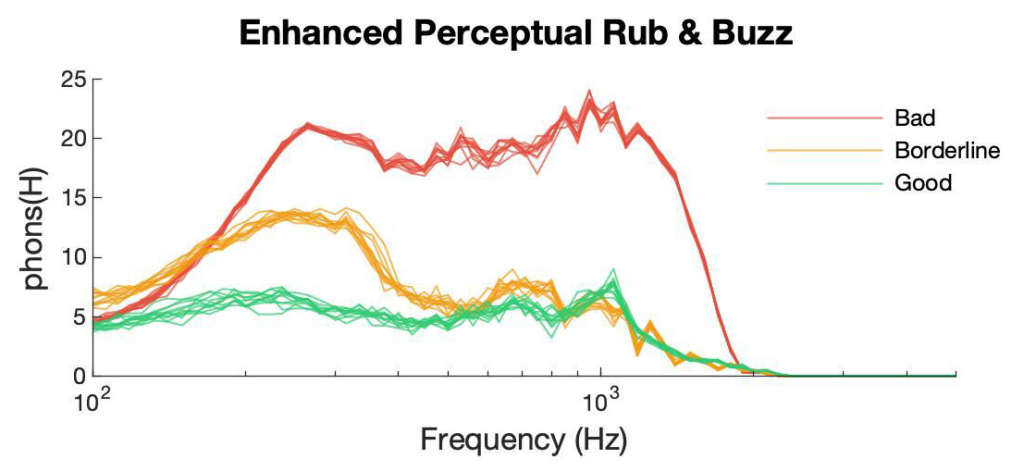A new perceptual distortion algorithm for end-of-line testing has been introduced to Listen’s SoundCheck 20 analysis software, which is used to test automotive infotainment systems as well as other audio equipment.
The enhanced Rub and Buzz feature piggy backs off the sound psychoacoustic principles applied in Listen’s 2011 perceptual algorithm. New research has enabled refinements that improve listener correlation, while new noise reduction technology is said to ensure high repeatability and reliability. Listen states that the algorithm performs like a human ear under normal listening conditions with the background noise of a manufacturing environment. Perceptual rub and buzz is measured using the same stepped sine wave, simultaneously with other end-of-line measurements.
An overhauled signal generator brings additional functionality and simplified operation, particularly when using wav files. In addition to standard audio stimuli (sine, white noise, pink noise, etc.) with user-selected sampling rates and resolution, it can play any wav file, any memory list file and any complex waveform created by the stimulus editor. The level can be referenced to peak, dB or RMS. The signal can be equalized in real time, and custom EQ curves applied, which is useful when using a non-flat source such as a mouth simulator. A specific portion of a waveform can be selected to play, either by selecting a start and stop time in seconds, or by examining the waveform, and signals can play for a fixed duration, a fixed number of times, or in a continuous loop. Outputs from two or more signal generators can be mixed on the same channel, and waveforms from multiple signal generators can be synchronized, or delayed for phase control during playback.
Several new features expand the software’s post-processing capabilities for testing communications devices. These include batch processing of external files, a silence stimulus step, and RMS level versus time and histogram post-processing steps. A pre-written test sequence for categorizing Doubletalk performance to two international standards, ITU-T P.502 and ETSI TS 126 132, is also available. Other enhancements include a stimulus editor upgrade, the ability to export multiple SoundCheck recorded waveforms to a single multichannel wav file and a hardware reset option for quickly changing audio interfaces or restoring hardware to a known configuration.



